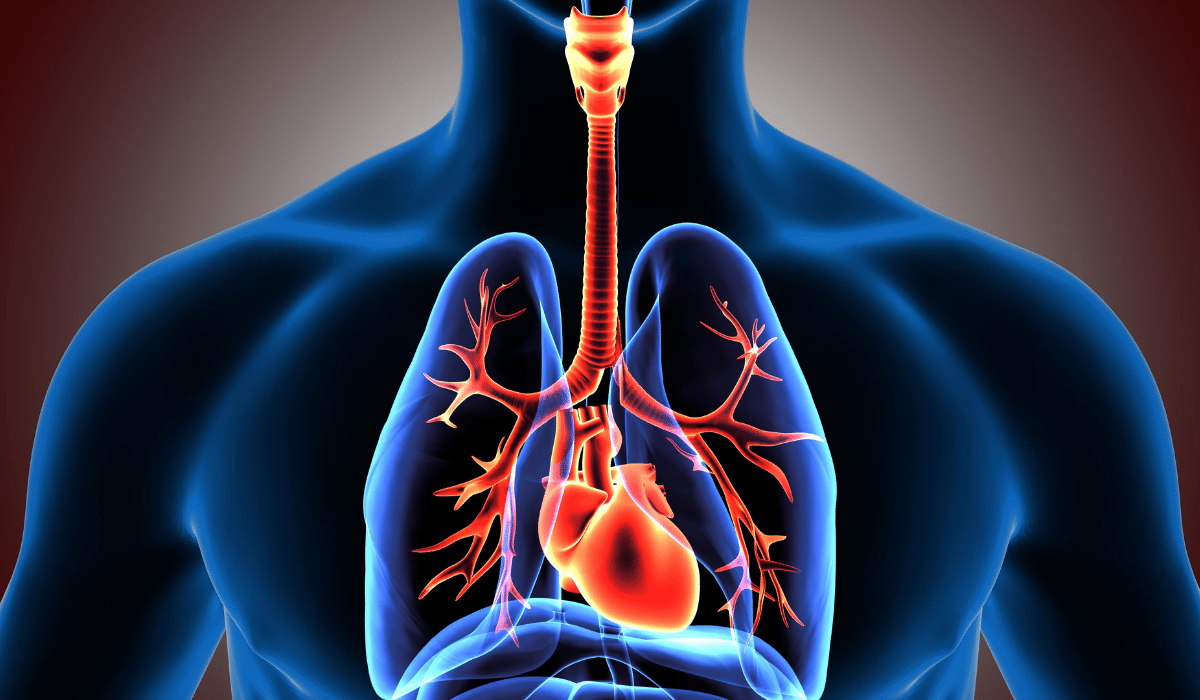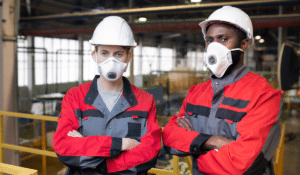A workplace respiratory protection program is an important element of workplace safety. Respirators are designed to protect workers from inhaling hazardous substances such as dust, fumes, and gases that can cause serious health problems, including lung cancer, asthma, and silicosis.
A respiratory protection program can help prevent these issues and create a safer and healthier workplace for employees. And, in many cases, they’re also required by law as part of OSHA regulations.
In this article, we explore the benefits of implementing a strong protection program, and why there’s more to it than simply avoiding fines and penalties.
Let’s take a look.
Related Article: Are You Forgetting This Key Part to the Respirator Standard?

Benefits of Implementing a Workplace Respiratory Protection Program
Protects Employees’ Health: A workplace respiratory protection program can prevent workers from inhaling harmful substances that can cause lung cancer, asthma, and other respiratory diseases. By protecting the employees’ health, the program helps ensure that they can continue to work safely and productively.
Reduces Health Care Costs: By preventing respiratory illnesses, a workplace respiratory protection program can help reduce health care costs for both employees and employers. Respiratory diseases can be expensive to treat, and the cost of treatment can be a significant burden on workers and their families.
Typically, the cost of preventing these illnesses through a proper workplace respiratory protection program is insignificant compared to the costs involved with treatments.
Improves Productivity: When employees remain healthy and safe, they remain more productive. A workplace respiratory protection program can help create a safer and healthier workplace, which can increase productivity and reduce absenteeism.
Compliance with Regulations: Many industries are required to implement respiratory protection programs to comply with regulations. A workplace respiratory protection program can help ensure compliance and prevent penalties for non-compliance.
Boosts Employee Morale: Employees appreciate employers who prioritize their safety and health. A workplace respiratory protection program can help boost employee morale and create a positive work environment. Without the proper protections in place, attracting and retaining top talent can become nearly impossible.
Protection During Emergencies: In the event of an emergency, such as a chemical spill or a fire, a workplace respiratory protection program can provide employees with the protection needed to safely evacuate the area.
Related Article: Don’t Overlook These Other Occupational Respiratory Illnesses
Setting Up an OSHA-Compliant Workplace Respiratory Protection Program
An OSHA-compliant respiratory protection program should be a comprehensive program tailored to protect employees from harmful airborne contaminants (especially those present at the worksite).
As an employer, you’re expected to develop and implement a written respiratory protection program with worksite-specific procedures and elements for required respirator use. And, such programs must be administered by a suitably trained program administrator.
In addition, certain program elements may be required for voluntary use to prevent potential hazards associated with the incorrect use of the respirator.
The program typically includes the following elements:
- Hazard Assessment: This involves identifying and evaluating workplace hazards that may require respiratory protection.
- Respirator Selection: The program must select the appropriate respirator based on the identified hazards.
- Respirator Training: Proper training is required to ensure employees know how to properly use and maintain the respirator.
- Fit Testing: This is to ensure that the respirator properly fits each employee to provide maximum protection.
- Medical Evaluation: Employees must undergo a medical evaluation to ensure they are physically able to wear a respirator.
- Maintenance and Inspection: The respirator must be properly maintained and inspected to ensure it is functioning properly.
OSHA documents and references to guide you:
- Respiratory protection: Standard 134.
- Industry specific Respiratory Protection Standards.
- Respiratory protection: General guidance.
- OSHA Instruction: Respiratory Protection Program Guidelines.
Key Takeaways
A workplace respiratory protection program is an essential element of workplace safety.
It can protect employees’ health, reduce health care costs, improve productivity, ensure compliance with regulations, boost employee morale, and provide protection during emergencies.
Implementing a comprehensive respiratory protection program requires careful planning, including hazard assessment, respirator selection, respirator training, fit testing, medical evaluation, and maintenance and inspection.
By implementing a workplace respiratory protection program, you can create a safer and healthier workplace for their employees, while simultaneously reducing costs associated with penalties, absenteeism, and medical treatments.
***
About Worksite Medical
In most cases, OSHA requires medical surveillance testing, and at no cost to employees.
Worksite Medical makes that program easier with mobile medical testing.
We conduct on-site respirator fit tests, as well as audiometric exams, pulmonary function tests and heavy metal lab work, right on your job site. We also keep accurate, easy-to-access medical records for your convenience. You’ll keep your employees at work, and stay ahead of OSHA inspections.




